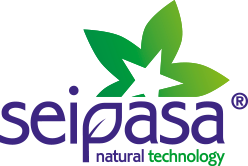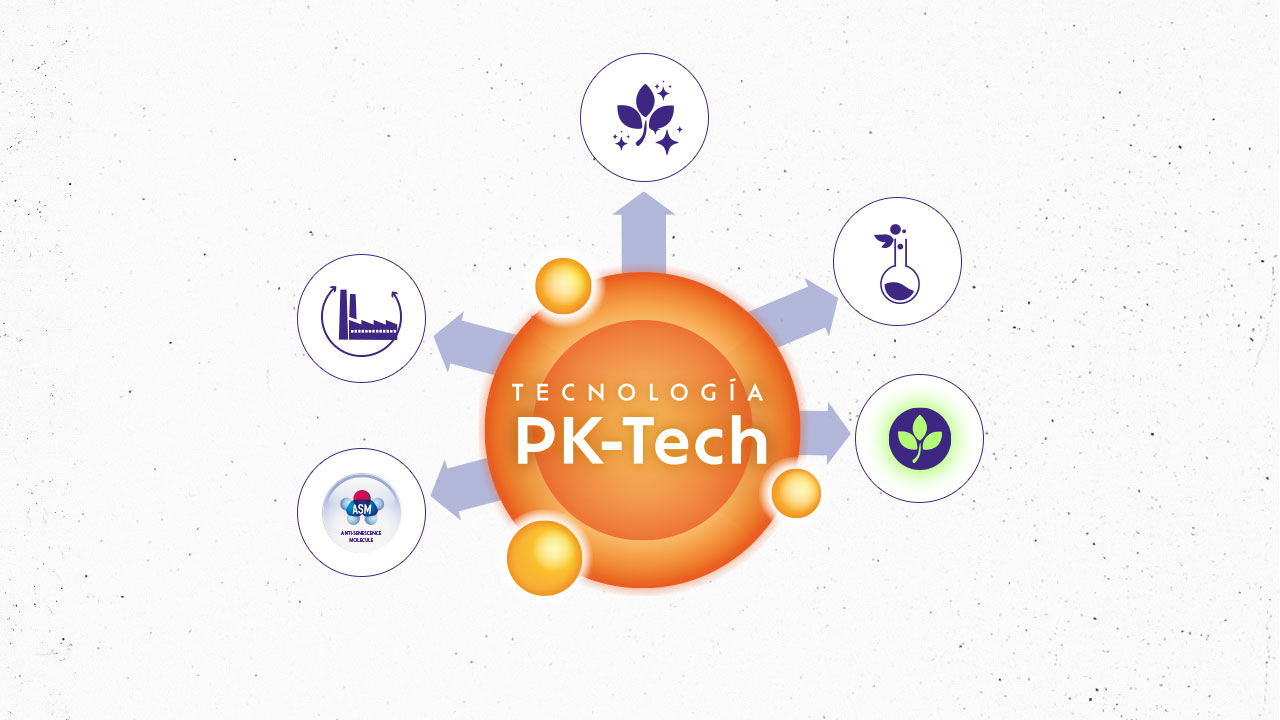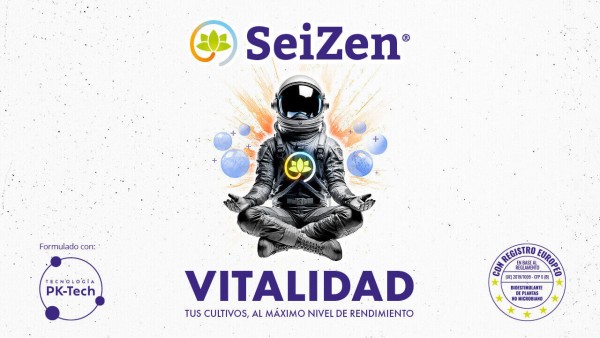PK-Tech stands for Photoassimilates Kynetics Technology. Developed by the Spanish company Seipasa, it is currently undergoing the patent process and lies at the heart of SeiZen, a product already registered in Europe under PFC 6 (B) (non-microbial plant biostimulant) in the new EU Regulation 2019/1009.
Below, we break down the five keys to understanding the essence of PK-Tech and its impact on crops.
1. The heart of innovation: the Anti-Senescence Molecule (ASM).
At the heart of PK-Tech is the Anti-Senescence Molecule (ASM). This molecule has been specifically designed to act at the cellular level, protecting a vital component of plants: photosystem II. The ASM prevents the degradation of photosystem II by neutralising the action of free radicals, thus preventing chlorophyll degradation and extending the lifespan of the chloroplast. This means that the ASM works directly to neutralise oxygen free radicals (OFR), preventing oxidative damage and enhancing photosynthetic activity.
2. Energy factory always on the move: increased carbon assimilation.
Protecting photosystem II and neutralising free radicals directly affects the plant’s ability to generate energy. The result is increased carbon assimilation. PK-Tech maximises carbon uptake, enabling the plant to continuously generate energy. This energy can be directed by the plant to where it is most needed at any given moment in its life cycle. In essence, SeiZen enables the plant to keep its energy factory up and running continuously.
3. Beyond the standard biostimulant concept: empowering the plant.
Unlike conventional biostimulants, which provide a specific biochemical substrate, SeiZen with PK-Tech goes one step further. Its aim is not only to add to, but also to enhance, the plant’s intrinsic capacity. It allows the plant to maximise its ability to convert light energy into chemical energy. PK-Tech places SeiZen in an earlier metabolic stage, enabling the plant to focus its energy where required, as it has a much greater energetic capacity thanks to ASM’s boosting and biostimulating effect.
4. Priming effect: preparing the plant for the most challenging situations.
The ASM gives SeiZen what is called a priming effect. This concept is similar to a “vaccine” for the plant, preparing it to face future challenges. The ASM acts during periods of peak energy demand by blocking ethylene synthesis and delaying plant tissue senescence. This extends the shelf life of the fruit. Application is recommended even before adverse crop conditions arise.
5. The new era of biostimulants: science and differentiation.
The European registration of SeiZen marks a new stage in Seipasa’s development of biostimulants. This allows the legal marketing of a product across the EU with a specific biostimulant function claim, setting it apart from a simple fertiliser.
The new EU Regulation 2019/1009 takes us to a much more technical market, in which our accumulated knowledge, development and innovation will be crucial in providing farmers with a differentiated offer. This certification endorses not only the effectiveness of SeiZen, but also Seipasa’s value proposition based on its own science and technology.




